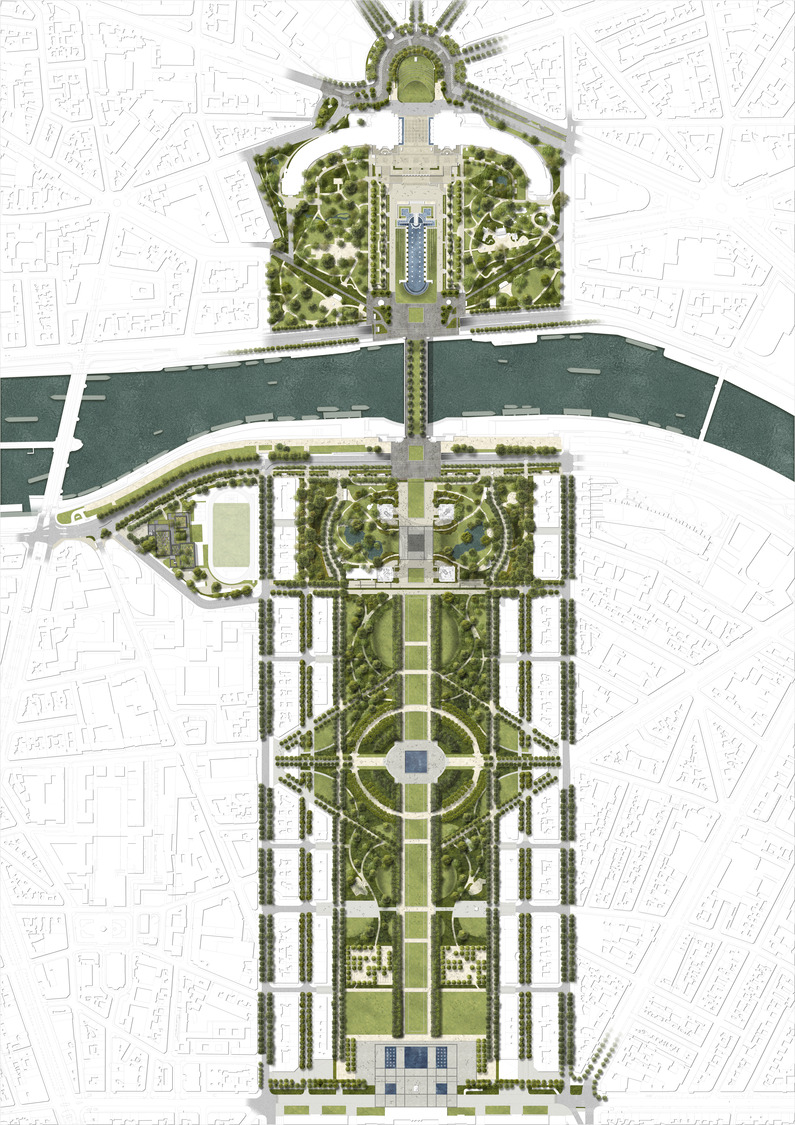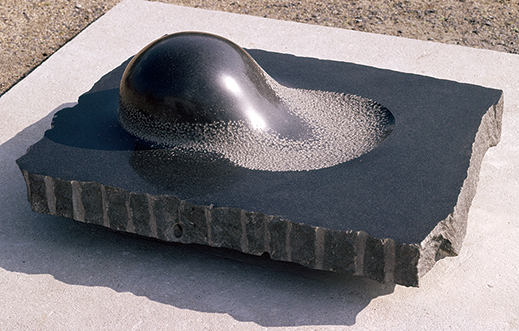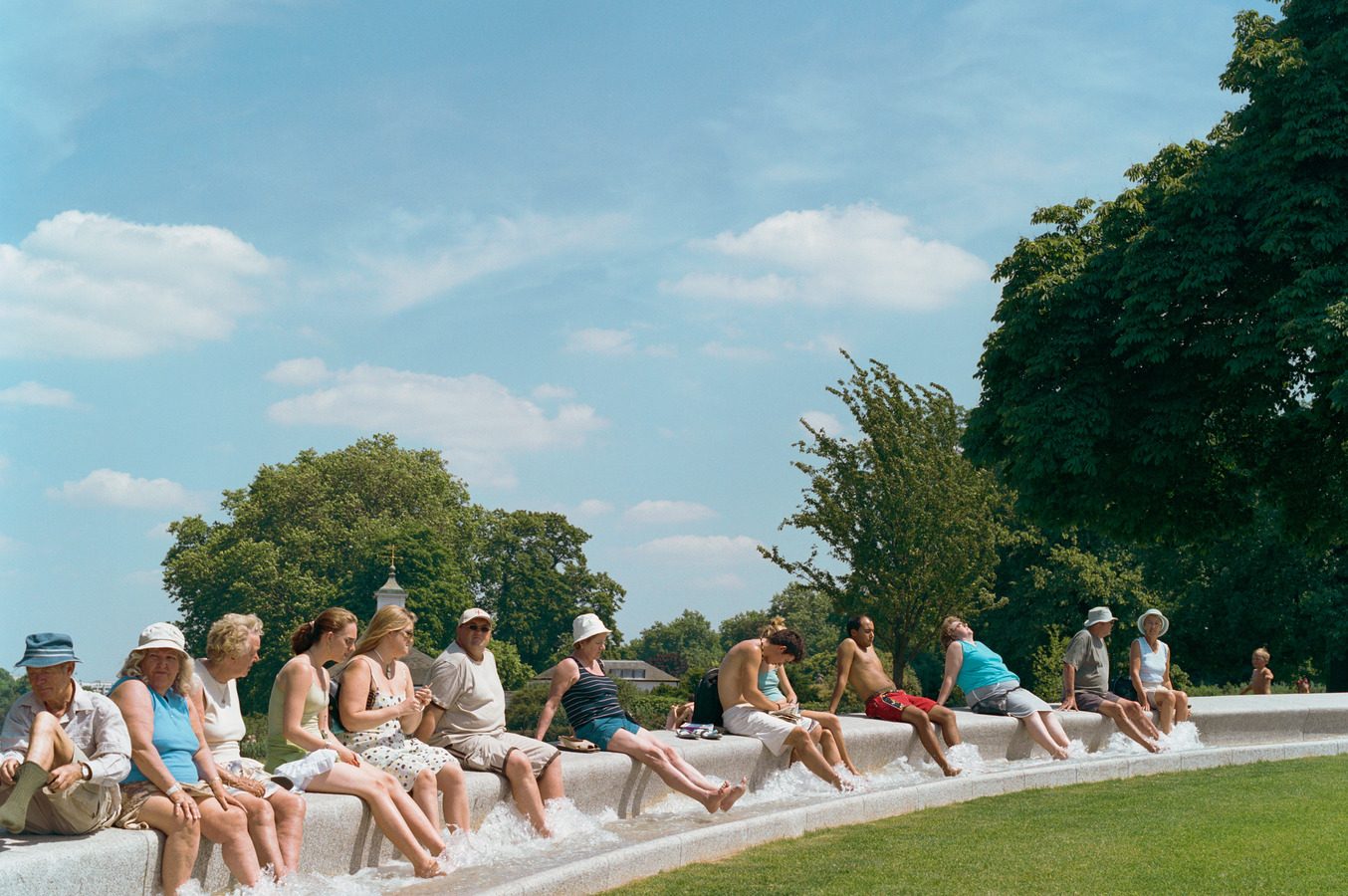Currently transforming the Site Tour Eiffel – just one project in a portfolio that has our jaws dropping like Orcus at Bomarzo – Arts and Gardens talks to Neil Porter; landscape architect and leader at Gustafson Porter + Bowman.
From the Diana Princess of Wales Memorial Fountain in London’s Hyde Park, to Bay East in Singapore, to the Garden of Forgiveness and Shoreline Walk in Beirut, Neil’s practice has re-imagined the paradigm for public spaces across the world. While also finding the calendar space to share his experience inside lecture theatres, and perhaps just a spot of gardening in his own Norfolk patch.

What makes the most tantalising brief for designing a new landscape?
The landscape brief is generally more informative for what it leaves out, or leaves open to interpretation, rather than what it contains. Understanding the history and memories of the site’s past, the activities and culture that surround it, and what will capture the collective imagination of its future users takes time to understand and is often not clearly articulated within a brief. Visiting a place and the site for the first time is often the most tantalising moment – will it meet expectations, what will it reveal, how can one reinterpret the brief to suit and enliven the place? That’s when the ideas role in. Never design without feeling the site!
How has experimentation evolved in your projects?
We experiment to solve design challenges or integrate new technologies where we see that they can improve the quality of our work. We were one of the first landscape practices to use 3D computer generated design tools such as Rhino and Grasshopper. We had always created complex 3D landform models in clay, but when working on the Diana Princess of Wales Memorial, we needed to provide more refined information to detail the form and texture of the fountain. Rather than use 3D modelling for presentation purposes, we needed to translate information for manufacture. Initially, this was made possible with the support of specialists such as Texxus, however it has now become the norm within our office. Landscape, to an extent, relies on traditional construction and maintenance techniques. Today, finding the products and processes that can generate sustainable landscape environments in often artificial contexts is really important. We need to do all we can to combat climate change.

What’s in the pipeline for the next few years?
Currently we are working on the transformation of the Site Tour Eiffel, the deceptively simple but highly complex planted axis between the Trocadero and the Ecole Militaire, Paris. Additionally, we are reworking Victoria Tower Gardens beside the Houses of Parliament, London, to house Ron Arad’s National Holocaust Memorial and David Adjaye’s learning centre. Also, the squares and streets of Chelsea Barracks, adjacent to Ranleigh Gardens and home of the Chelsea Flower Show; the masterplan and inclusion of new landscapes at Storm King, the renowned Sculpture Park in New York State; the masterplan and landscape infrastructure for York Central; and Taikoo Place, a new garden at the centre of Swire’s high rise commercial district, Hong Kong. To name just a few!

Which responses to your landscapes are measures of success?
If our landscapes succeed it is because they are not prescriptive, they are flexible, sensual and allow for invention. We have created some really popular landscapes – places that people feel comfortable, gather for leisure, interact with nature, or spend time alone in contemplation. A good landscape takes one out of the ordinary routines of life and allows for another way of being; a free space to regain energy, change perceptions, or take on unexpected challenges.
What would a tour of your favourite water installations look like?
Sir Jeffrey Jellicoe’s water garden improbably placed on the roof of Harvey’s, Guildford. As a 5 year old it presented itself as the most wonderful playground, jumping its water features, stepping stones and planted islands.
Villa d’Este, Tivoli, on a warm rainy day. Giving up on the umbrellas and deciding to get soaked.
Keller Fountain Park, Portland Oregon. Its shear exuberance, filled with bathing residents on a hot summer’s day.
Kathryn Gustafson’s Jardin’s Imaginaire, Terrasson la Villedieu. A hillside garden of natural springs harnessed to create a contemporary renaissance water garden.

Which cities are leading innovators of public space?
Paris. The mayor is working to green the city and make pedestrians the priority. Paris has long led the conversation on sustainable futures and GP+B are looking to build on that work for the Site Tour Eiffel.
Copenhagen. The city has a forward thinking approach to re-using and occupying its old working waterfront as a sequence of public spaces for sculpture, events and leisure.
Singapore. Requiring city centre developments to replace their footprints with an equivalent area of green space has quickly created a remarkable new skyline. Projects such as ours at Marina South are creating a network of gardens in the air.
Putting work to one side, what garden would you create for yourself?
Naomi, my wife, and I just embarked on the creation of a garden within an existing garden in North Norfolk. It is the largest garden in the village and is surrounded by flint and brick walls, filled with native plants and trees, such as pines and holm oaks, plus some very odd garden centre strays. It needs restructuring to create vistas, with restful spaces to dwell and a range of environments to experiment and understand plants. Our first success is a bountiful vegetable garden.
Three artists who are important to you in three words…
Bridget Riley; playful, thoughtful, energetic.
Tiepolo; weightless, dreamy, theatrical.
Noguchi; earthly, sensual, elegant.

Your favourite garden or landscape of the world.
Courances; water, green calm.
Sissinghurst; profusion, colour, energy.
They have very different moods, but both take you on an experiential journey that can be visited multiple times and create wonder as the seasons change.

Your favourite tree.
Liriodendron. Its unusual leaf form and tulip shaped flowers have existed since prehistoric times. Having planted them at the Cultuurpark Westergasfabriek, Amsterdam where they continue their slow growth, I was astonished to see their massive mature scale in a grove at Storm King. They appear to have been there before man occupied the forest and carved out the meadows that are now the Sculpture Park. Wise old trees!

What are you most thinking about this year?
At the start of this year, GP+B become a founding signatory of the Landscape Architects Declare initiative. As well as a commitment to designing a more sustainable future, we are dedicated to rethinking our own internal practice and how we work as an office. As an industry responsible for our landscapes and as inhabitants of the earth, we must continually strive to combat global warming. 2020 has presented us with an additional challenge: we must do this whilst remaining safe during a global pandemic. The natural world is finding ways to provoke us into reflection and action.
Interview published August 2020.



